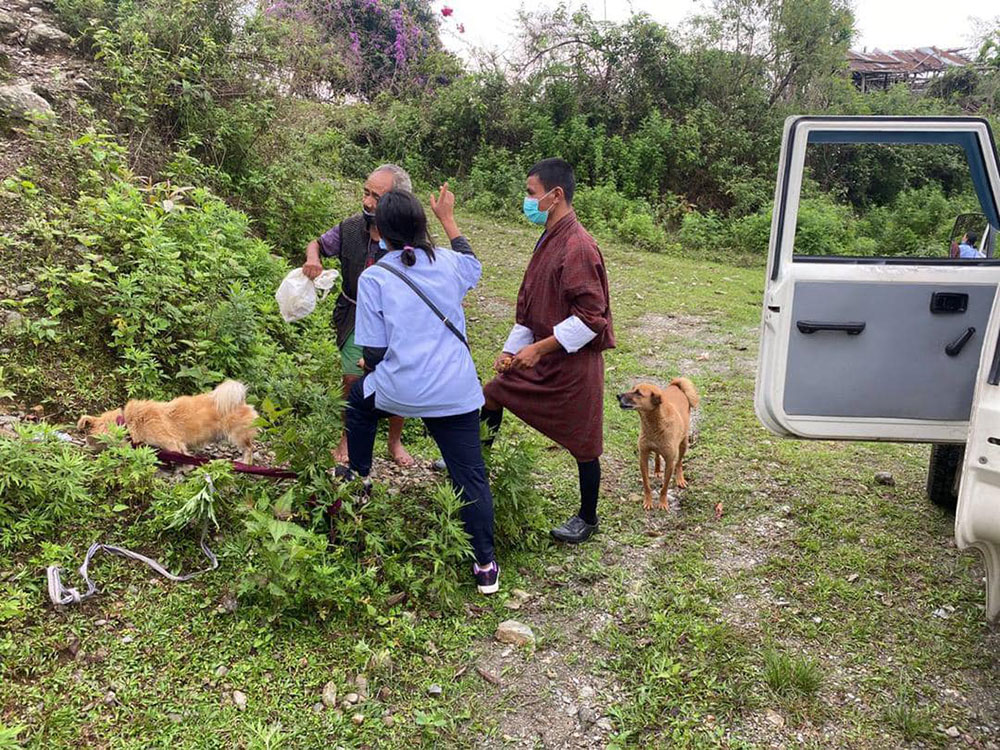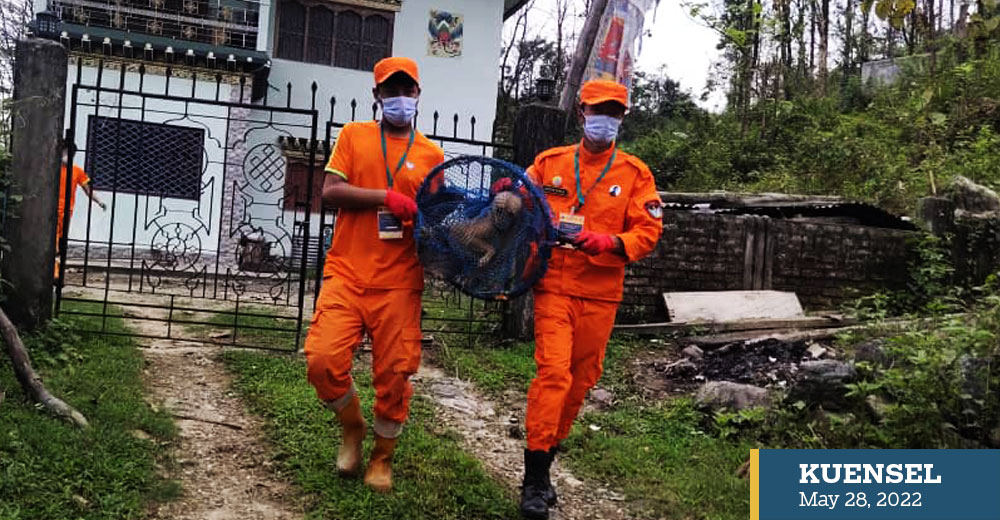There are 72,621 dogs roaming freely today
Chhimi Dema
The country’s efforts to control the dog population so far has been all bark without bite. The problem of stray dogs was recognised nearly five decades ago. Attempts like the dog sterilisation campaigns or neutering or even removing them were ineffective, evident from the continued increase in the number of dogs, stray dogs particularly.
However, the problem of stray dogs or free-roaming dogs is poised for a change. The target is that by 2030, the country will have no free-roaming dogs.
Deputy chief veterinary officer, Karma Wangdi, said that if 100 percent sterilisation of free-roaming dogs is achieved now, after seven to eight years there will be no free-roaming dogs. The sterilisation rate today is 93 percent, according to officials. Dogs, if they could talk, would however disagree.
The result of sterilisation takes time to see results. Karma Wangdi said that the current number of free-roaming dogs will remain stagnant because the neutered dogs won’t breed and will experience natural death.
The Nationwide Accelerated Dog Population Management and Rabies Control Programme (NADPM and RCP) launched last year aims to achieve 100 percent sterilisation of free-roaming dogs, register, and vaccinate all pet dogs, and control feral dogs.
The programme neutered 42,879 dogs from November until May 1. Currently, mopping up or sterilising 5,332 dogs that were missed during the first campaign is underway.


The first phase of the mopping which is underway neutered 1,888 dogs in 26 clinics until May 27. It is implemented in Chukha, Samtse, Punakha, Dagana, Wangdue, Tsirang, Zhemgang, Pemagatshel, Thimphu, Sarpang and Samdrupjongkhar.
Before the sterilisation campaign, the programme conducted the nationwide dog population census which recorded 72,621 free-roaming dogs or at least one dog for every nine Bhutanese. Out of this 26,951 were owned, but left to roam freely. 44,038 were stray dogs.
Under the NADPM, pet dogs are being monitored by inserting microchips. A total of 23,733 pet dogs in 15 dzongkhags were inserted with microchips as of May 19. Of these dogs, 72.4 percent were neutered.
A microchip is a radio frequency device implanted inside the body of a pet dog for identification purposes. The chip has unique identification codes, can be scanned with a scanner, and is no bigger than a rice grain.
Karma Wangdi said that the previous dog population effort has failed because it lacked collaborative effort. “The success of the programme is because of the collaborative effort of the livestock department, Desuung, local governments, and communities.”
From the 1970s to the 1980s, the dog population was managed by poisoning and shooting. Rochi Saymi (dog shooter) was a designation in the livestock department responsible for carrying out the shooting.
In the 1990s, the dogs were translocated that sparked animal welfare and social issues, and in the 2000s, the dogs were impounded.
Starting in 2009, the government and Humane Society International, an organisation that works to promote human-animal bonds, adopted a catch, neuter, vaccinate, and release programme, which ended in 2020.


